Google Nexus 4 Review - Google's new Flagship
by Brian Klug on November 13, 2012 8:45 AM EST- Posted in
- Smartphones
- LG
- Android
- Mobile
- APQ8064
- Nexus 4
- Android 4.2
- MDM9215
The Nexus 4 is based around a 1.5 GHz Qualcomm Snapdragon S4 Pro SoC, the quad core Krait APQ8064 with Adreno 320 GPU, which is still built on a 28nm process. The combination of APQ8064 for AP and MDM9x15 for baseband is Qualcomm's Fusion 3 platform, and the Nexus 4 and Optimus G are the first phones to market based on that platform. This is a relatively unique opportunity for Nexus, which until recently wasn't really first to market with the latest and greatest silicon.
A while ago we posted our Nexus 4 and Nexus 10 performance preview. At that point we still had a lot of testing to perform, and many people noted that the Nexus 4 performance was far behind the LG Optimus G despite it being based on the same platform. Later, some people noticed that I had uploaded another set of results from GLBenchmark 2.5 to the online result browser with much better performance. The difference wasn't some over the air software update but rather that I was running some of the tests with the Nexus 4 in a ziplock bag inside the freezer to mitigate any condensation problems, and simultaneously nail down any possible thermal throttling.
I've re-run everything and can confirm obviously that there was thermal throttling going on affecting some of the results, and have included the new results wherever there was a deviation from previous. For those wondering why the LG Optimus G wasn't affected in spite of it having the same platform, the reason is because the results from the Optimus G were run in parts due to some instability affecting its ability to run a complete set of tests without crashing. The Nexus 4 has newer drivers that don't crash during a full GLBenchmark 2.5 run but as a result run the device long enough for thermal throttling to kick in.
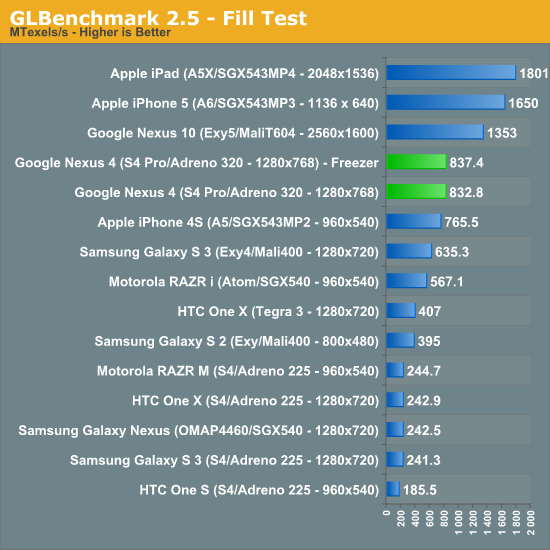
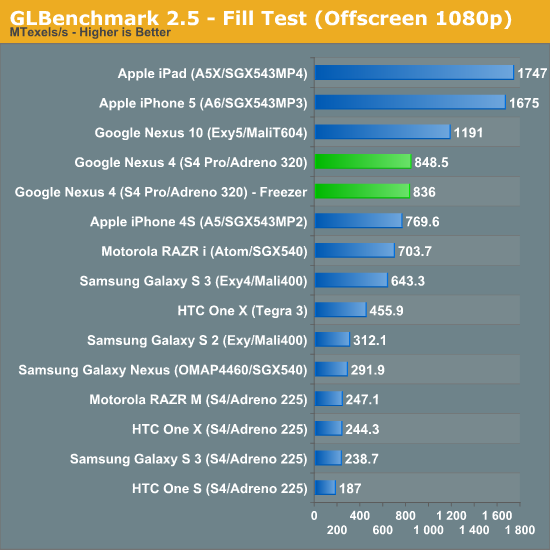
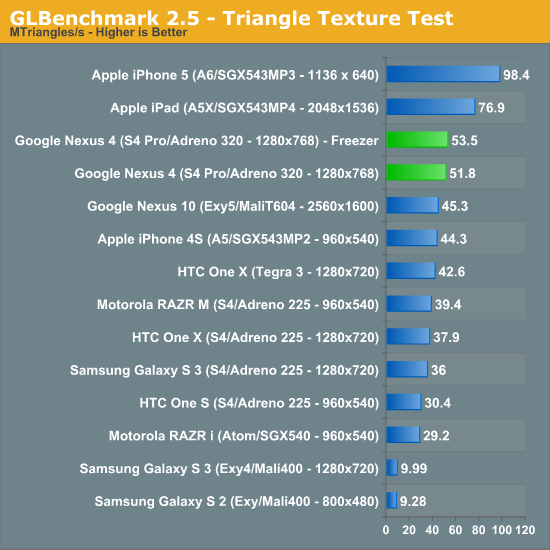
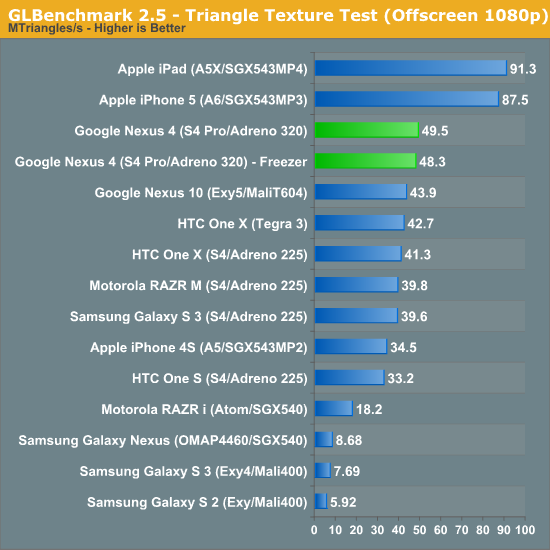
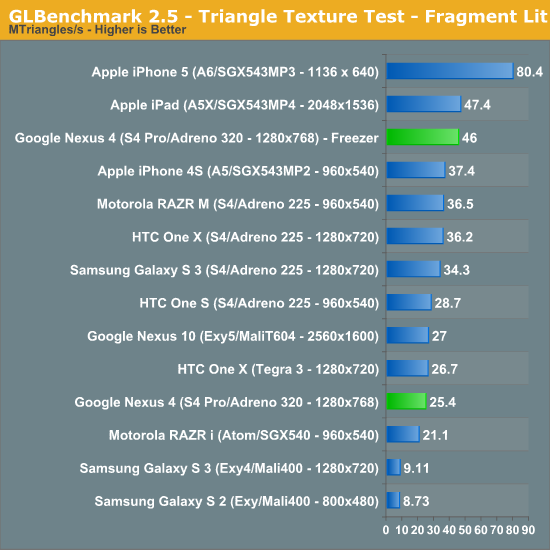
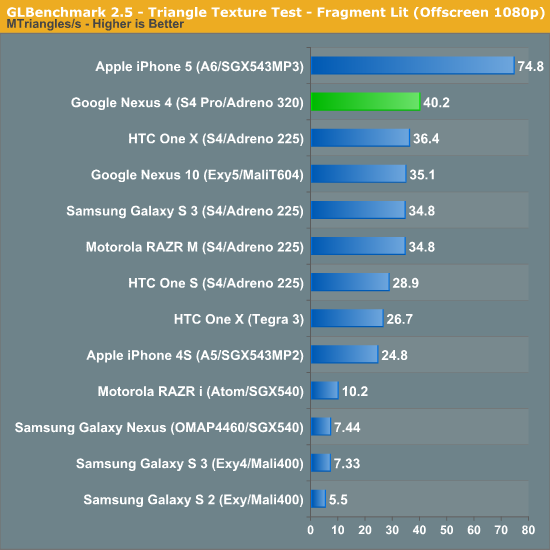
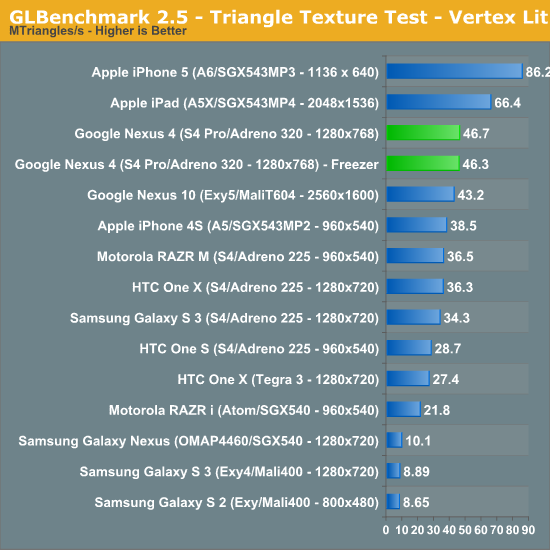
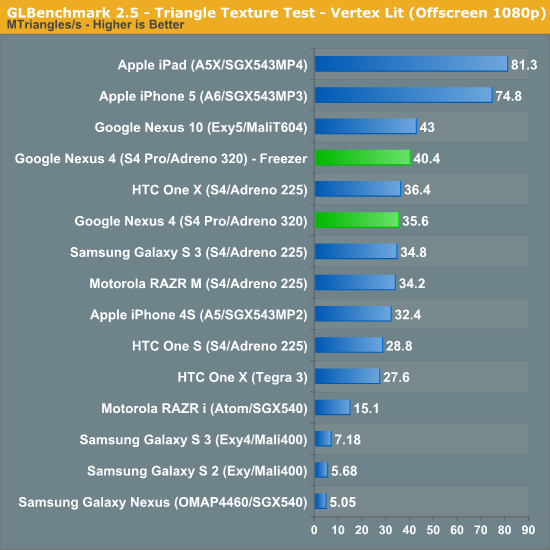
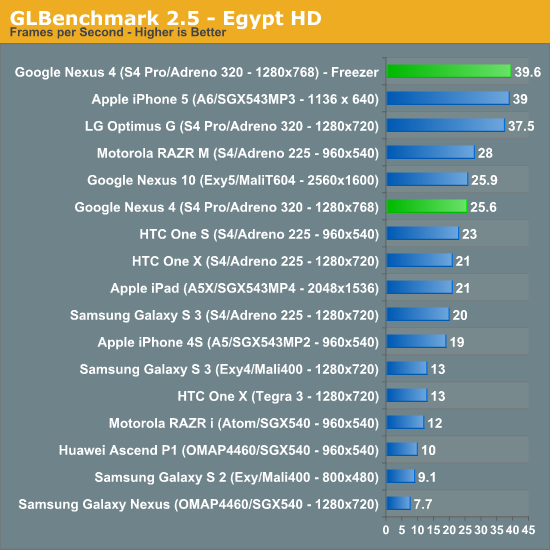
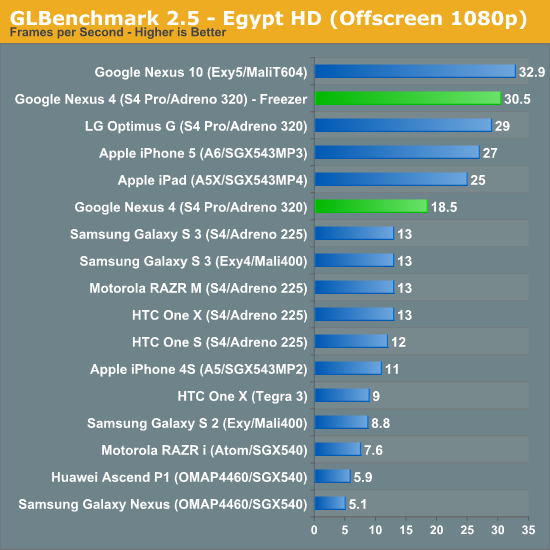
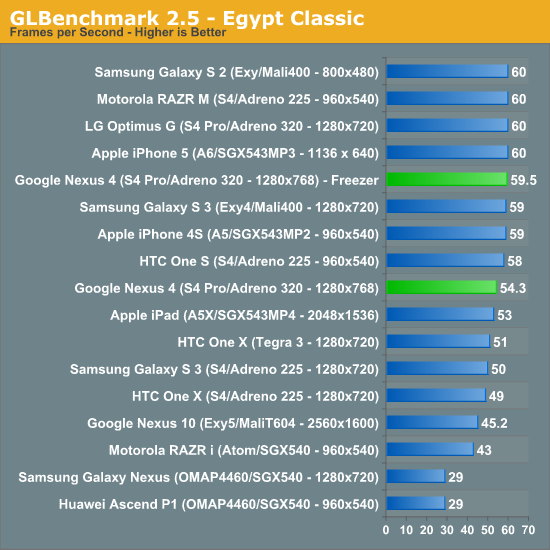
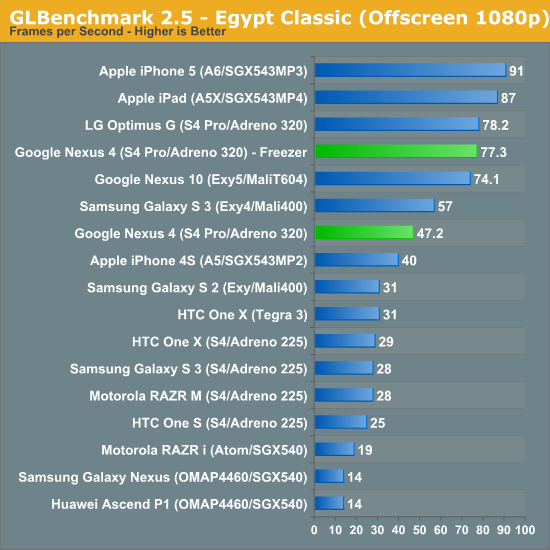
The result of the tests in the freezer results that are much closer to what we'd expect based on the APQ8064 MDP/T runs and the Optimus G numbers I saw in Korea.
When it comes to the CPU side of things there were results also affected by thermal throttling. I spaced some of those runs out (unintentionally) enough that performance didn't change, but for other things it did affect performance. I can't tell what GPU clocks end up being when the SoC decides to throttle, but it is possible to nail down what CPU performance state APQ8064 settles down into when there's throttling going on by looking at the state tables.

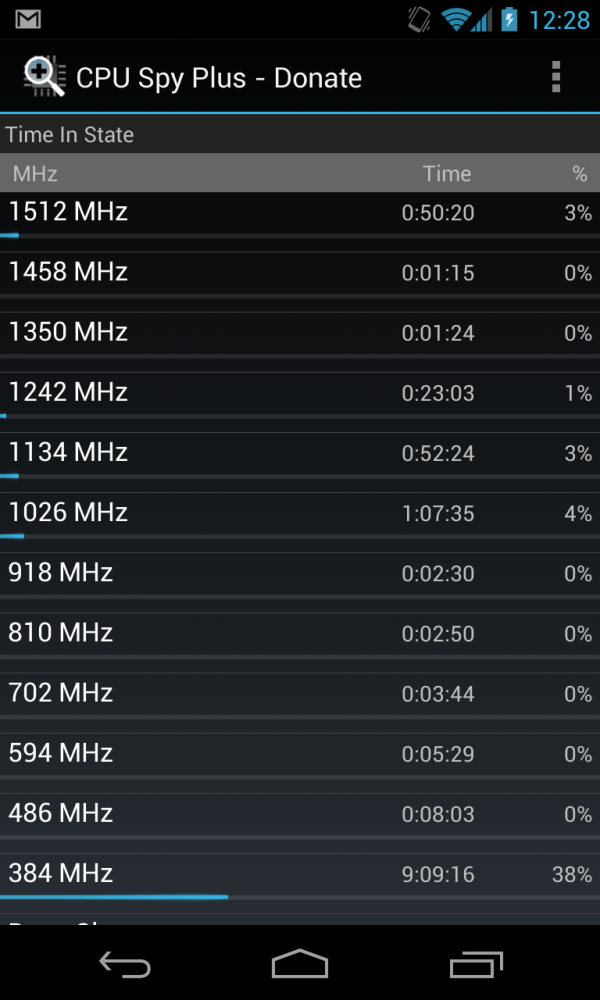
Left - 1.134 GHz during throttling (running tests), Right - All the performance states
I can see the Nexus 4 not use any of the performance states above 1134 MHz when it's getting hot, as shown in the images above. I've tweeted a link to the pastebin for thermald.conf which I believe configures the thermal cutoffs and will be interesting to kernel hackers trying to play with these values.
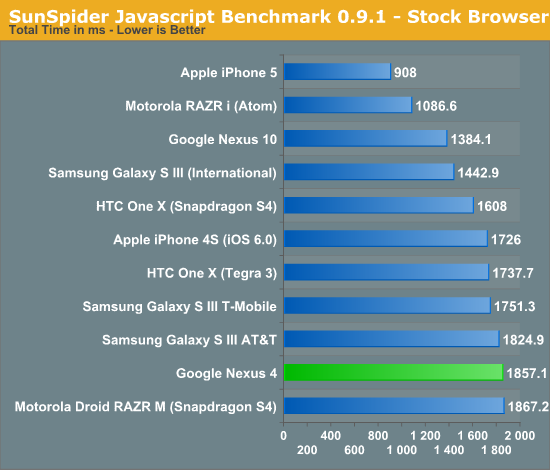
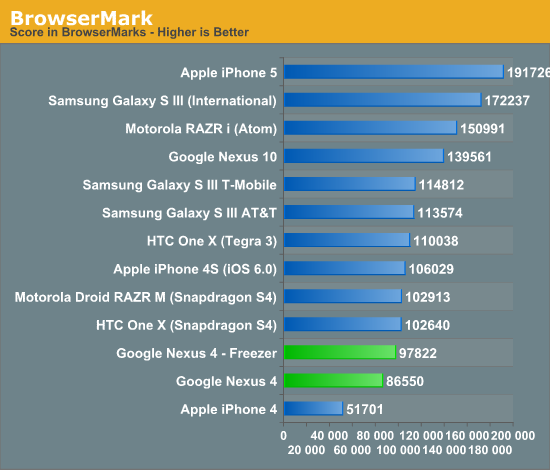
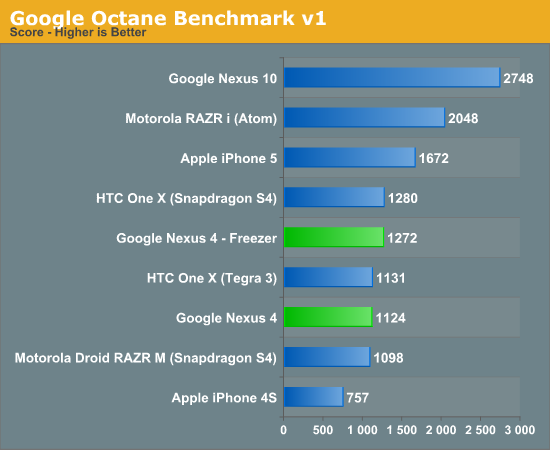
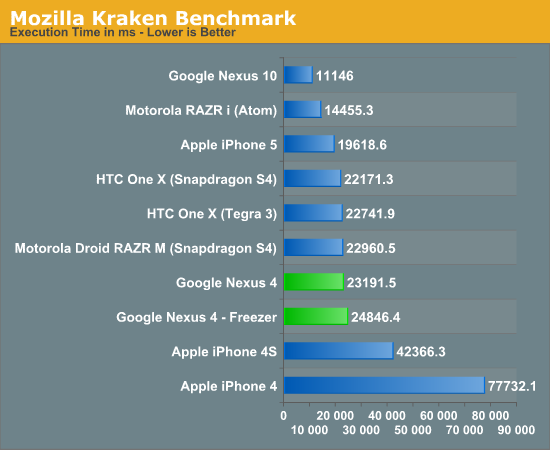
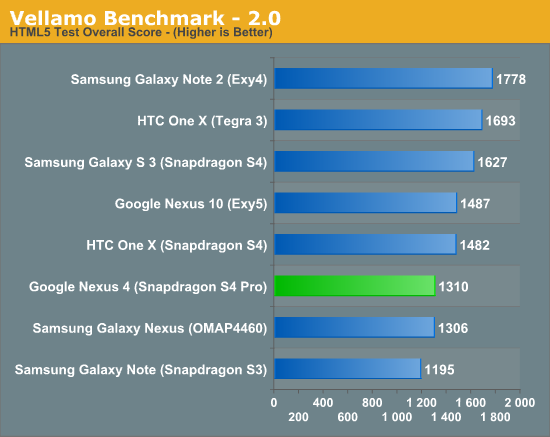
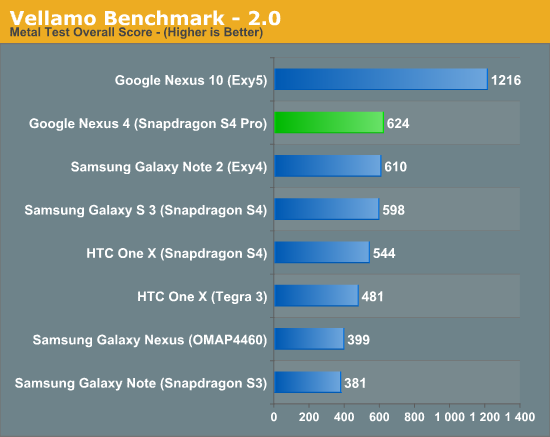
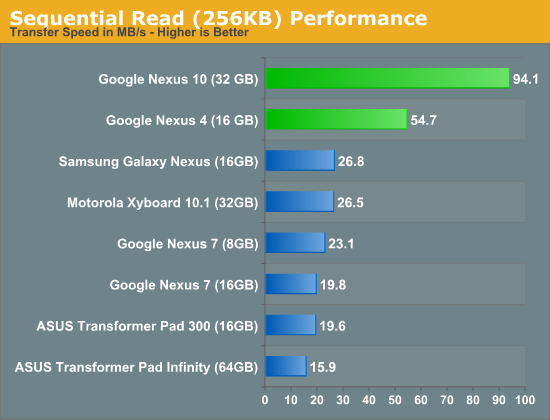
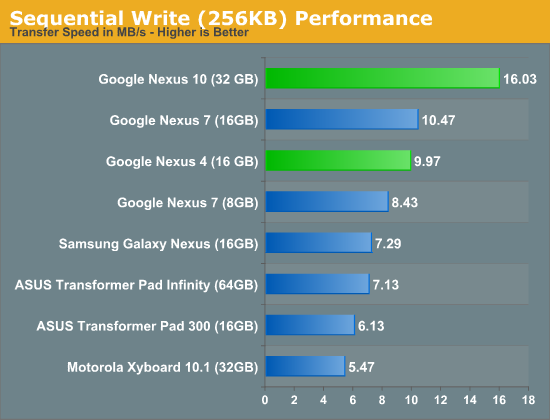
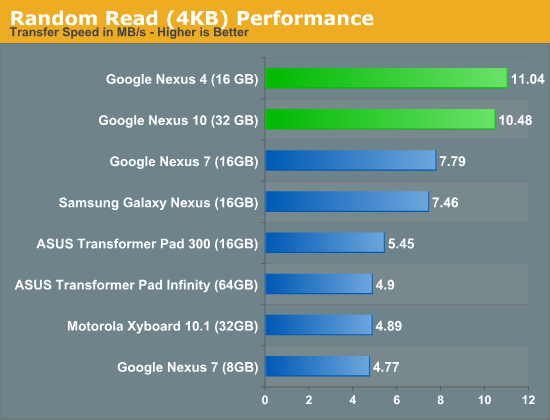
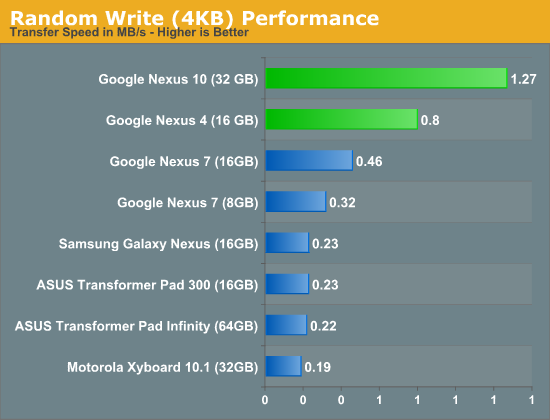
Our CPU performance side is unfortunately still dominated by JavaScript performance tests. The story there is that the Nexus 4 ships with Chrome (and originally shipped with a newer build of Chrome than what was on the market - we were running that updated version all along) and thus the mainline version of the V8 JavaScript engine. OEMs perform their own optimizations to the V8 library, and try to upstream whatever they can into the main project, but in the case of Chrome for Android that means V8 sans secret OEM sauce.










188 Comments
View All Comments
Freedomuser - Wednesday, November 14, 2012 - link
Qualcomm's S4 pro has thermal problems. It will affect daily usage with surrounding temperatures and the battery will be much hotter in higher temperatures.Freedomuser - Wednesday, November 14, 2012 - link
First of, great review. If anyone planning to purchased a device, Anandtech is a stop for a review.I want to know what phones survived your test suit, LG Optimus G fall out. Nexus 4 finished with thermal problems. What about other phones on the charts? Please, list it on the charts.
mrkaupo - Wednesday, November 14, 2012 - link
Great review.Hard to decide Lumia920 or Nexus4.
Nexus hardware and price is great, but L920 design and wp8 is so tempting.
I have to wait for L920 review - camera and battery life is the question for me.
leafspring - Wednesday, November 14, 2012 - link
The performance tests are hilarious. Of what use is a result that has to be achieved by placing the phone in the freezer? I usually don't sit in the freezer when using my smartphone so what are these numbers supposed to tell me?Other than that, nice article. :)
noblemo - Wednesday, November 14, 2012 - link
There are other comments above that address this question. In summary, the freezer tests verify that the initial performance issues were the result of thermal throttling. It is a troubleshooting technique, not a lifestyle recommendation.jian9007 - Wednesday, November 14, 2012 - link
Thanks for the detailed review of the Nexus 4. I always like to come here and read the reviews, as they delve into more intricate areas of products. Keep up the good work.adityanag - Wednesday, November 14, 2012 - link
"Corded up, the Galaxy Nexus can eek out just over 19 Mbps on 64QAM single carrier WCDMA which is the maximum that hardware supports."On the Cellular, Wi-Fi GNSS page, about 3/4ths of the way down the page.
eek is a mouse's cry :)
meloz - Wednesday, November 14, 2012 - link
I had to laugh out loud when I saw the benchmarks with "freezer" results.What a farce. If this is tbe best Google / LG can come up with, Apple truly deserve their pricing premiums and marketshare.
Hopefully Google will be shipping a walk-in freezer with every Nexus 4, so that us users can walk into the freezer to use the full potential of the new wondergadget.
ferrydust - Wednesday, November 14, 2012 - link
Article says: "In fact having the photo table daydream going will slow down charging on that device somewhat dramatically if you’re not careful."I am pleasantly surprised with the Daydream feature, I expect they'll add more settings options for fine-tuning customization, but it's a great start. There is zero interference with charging because all you have to do is press the power button once to turn off the screen! Then no daydream and no powerdrain on that front! But for those times when your're not worried about charging your device but have it docked or sitting someplace and would like to enjoy soothing colors or favorite pictures, the Daydream screensaver feature is a pleasant option.
pmartin - Wednesday, November 14, 2012 - link
If the phone has to placed in the freezer to get all the performance you paid for then the phone is broke. Thanks to this review the phone went from a must buy to a wait till its fixed. Why anyone would buy this phone after reading your review is a retarded fanboy. Thanks for a informative review.